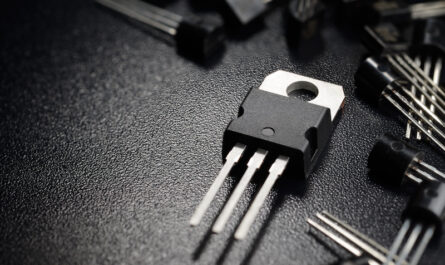What is a Computerized Maintenance Management System?
A Computerized Maintenance Management System, commonly referred to as a Computerized Maintenance Management System, is a software application that is designed to assist organizations in managing their equipment maintenance processes more effectively. CMMS software offers a centralized database for storing information related to plant assets, maintenance tasks, budgets, and work order history. It allows maintenance teams to more easily prioritize work, track labor and component costs, and analyze equipment reliability.
Key Features of a Computerized Maintenance Management System
Some of the core features that are typically included in a modern CMMS solution include:
Asset Management
A CMMS provides the ability to catalog all production equipment, facility infrastructure, and other physical assets that require regular maintenance. Each asset can be assigned key details like manufacturer, model, serial number, purchase date, maintenance history, parts inventory, and work order records.
Work Order Management
The system automates the creation, assignment, tracking, and closing of work orders. Technicians can receive assigned tasks on mobile devices and record labor hours, parts used, and completion status electronically. Management has visibility into workloads and project status.
Inventory Control
Computerized Maintenance Management System integrates with inventory databases to record stock levels and item movement. Technicians can request parts needed for jobs and the system updates stock counts. Planned reorders reduce downtime from depleted supplies.
Scheduling
Maintenance tasks can be scheduled based on equipment type, frequency of use, and preventive maintenance plans. Technicians receive an automated schedule on mobile computers or desktops for improved efficiency.
Budgeting and Cost Tracking
All maintenance labor, contract services, and materials spending is tracked by asset, department, and work order. Budget to actual comparisons help control costs and plan future capital.
Reporting and Analytics
Key performance indicators like overall equipment effectiveness, mean time between failure, and cost per maintenance hour can be measured. Critical reports identify needed process or systems improvements.
Predictive Maintenance
The latest Computerized Maintenance Management System include tools like vibration monitoring, infrared imaging, and oil analysis to help spot potential failures early. Maintenance is shifted from reactive to condition-based for increased safety and uptime.
Advantages of a CMMS
Some of the main benefits organizations gain by adopting a Computerized Maintenance Management System solution include:
Improved Plant Uptime – Managing maintenance activities more efficiently through features like preventative scheduling helps keep production equipment running smoothly. Unplanned downtime is reduced.
Cost Savings – Labor, inventory, and contractor spending can be tightly controlled. Parts are available when needed versus rushed high-cost shipments. Overall maintenance expense decreases.
Safety Compliance – Ensuring correct maintenance procedures and safety inspections are followed through work orders helps protect workers and meets regulatory standards.
Performance Tracking – Key metrics provide visibility into areas needing attention. Strategic decisions around staffing, equipment investments, and process improvements are supported by analytics.
Mobility – Technicians access the latest asset information and tasks from mobile devices in the field. Communication and collaboration are streamlined versus paper-based notes.
Documentation – A centralized system archives all work history, component changes, contractor visits, and compliance paperwork for audits, warranties and troubleshooting long-term issues.
Integration – Modern Computerized Maintenance Management System integrate with other plant systems like EAM, SCADA, CNC machines and handheld scanners for a connected digital environment.
Implementation Considerations
When selecting and deploying CMMS software, some factors manufacturers should evaluate include:
Ease of Use – Choose a solution with intuitive interfaces for both frontline staff and administrators. Training requirements should be minimal.
Configurability – Look for flexible systems that can be customized to your unique equipment, processes, forms and workflows versus rigid templates.
Integration Needs – Assess what other plant systems need to share data and choose a CMMS with open APIs for painless integration.
Cloud or On-Premise – Cloud-hosted options reduce upfront costs but require internet. On-premise provides full control but higher support needs long-term.
Budget – Consider licensing costs, planned users, and additional modules. Cloud subscription is often cheaper annually than perpetual licenses for on-premise software.
Vendor Reputation -research the stability, customer service reputation and industry experience of prospective CMMS providers.
Implementation Support – Dedicated implementation consultants help get the system launched rapidly versus long disruptive do-it-yourself configurations.
In conclusion, a well-planned Computerized Maintenance Management System installation can deliver significant and ongoing improvements to plant operations, asset performance, record-keeping and margin opportunities. Selecting the right software partner and change managing staff adoption are key success factors.




